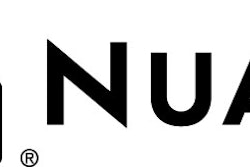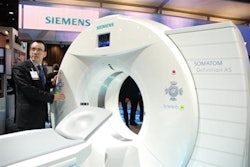CHICAGO - Pssst ... need some "best-practice" radiology reporting templates developed and used by experts in their fields? If so, the RSNA has a deal for you.
With the release of 30 new report templates scheduled this month, the RSNA's library will contain more than 100 templates that are downloadable free of charge. Charles Kahn Jr., MD, professor of radiology and chief of its division of informatics at the Medical College of Wisconsin in Milwaukee, made this announcement during a poster presentation on Sunday.
The RSNA Radiology Reporting Templates library represents work by the RSNA Structured Reporting Subcommittee as part of an initiative to identify and promote excellence in reporting. Starting in 2007, the subcommittee began to develop best-practice templates based on the most commonly ordered exams in 12 specialty areas, with the objective of providing guidelines for content. The group also wanted to establish a standard format with respect to what specific exam reports should contain.
The library made its debut at RSNA 2009, "opening" with 70 report templates representing 13 anatomic and specialty categories of radiology reports. The addition of 30 new templates expands the offerings to include common imaging procedures such as those for chest x-rays or an abdomen series, as well as complex ones such as a template for a cardiac CT exam.
"When planning what to add this year, we decided to add some templates that would have a large impact with respect to utilization where the bulk of work in a radiology department is being done," Kahn said. "Even though some templates may seem to be simple and straightforward for frequently performed procedures, we felt that including these would increase the likelihood that radiologists will find them useful. This category of templates covers a broad range of reports that a typical radiologist does in the course of a day."
The new set of templates also includes ones selected and created by the various specialty subcommittees. These are designed for complex reports that adapt well to a structured format.
The other new innovation, Kahn reported, is that the subcommittee has developed and the RSNA will host a Web-based platform containing a search engine for the templates. The new website will make its debut demonstration on Tuesday during a course dedicated to the RSNA reporting initiative (Course II31, 10:30 a.m.-12:00 p.m., Room S501ABC).
In an interview with AuntMinnie.com, subcommittee chairman Curtis Langlotz, MD, PhD, of the Hospital of the University of Pennsylvania in Philadelphia, and Kahn said that the new Web platform's robust search functionality will increase the efficiency of finding desired templates as the library's contents grow.
It also will facilitate the sharing of best-practice templates by any radiologist with a template he or she would like to share. Preparation of templates is not the exclusive purview of the RSNA subcommittee. In fact, the subcommittee has always advocated that the library be a location where radiologists throughout the world can share reports and library users can have access to an extensive selection, according to Langlotz.
The RSNA will also be able to monitor website access and download counts. The website will eventually be able to notify a visitor in real-time of the number of downloads of a particular template, or, as is done at many retail websites, suggest other popular templates of relevance. Some day there might even be a "top 10" list.
The National Institute of Biomedical Imaging and Bioengineering (NIBIB) in Bethesda, MD, has awarded the RSNA a grant to support the incorporation of RadLex into radiology reporting templates.
"We are very excited because this NIBIB grant will ensure that the vocabulary used in the reporting templates is linked with a standard [RadLex] to facilitate communication, quality assurance, and the extraction of information from reports," he said. "It also affords the opportunity to enhance RadLex by incorporating the vocabulary that is used in actual radiology reports. As we go forward, if we are finding terms that haven't appeared in RadLex, it will give us a way to identify and integrate them into the RadLex vocabulary."
Commercial product utilization
When Langlotz introduced the template library at RSNA 2009, he encouraged vendors to freely use them as well, noting that the propagation of the templates in commercial products would expand the subcommittee's mission to promote excellence in reporting. That has happened.
Burlington, MA-headquartered Nuance Communications was the first vendor to integrate the templates into its products, and it has done so extensively. The company formatted the templates and made them available to its PowerScribe and RadWhere customers early in 2010. Shortly thereafter, PowerScribe 360 customers also had access to them. A company spokesperson told AuntMinnie.com that the new set of templates will also be made available.
M*Modal of Pittsburgh announced on Sunday that the company has converted the templates into a document model format understood by its Speech Understanding platform. Also, in what the company claims to be an industry first, M*Modal has mapped the template data fields to ontologies such as RadLex, so that structured encoded data are created automatically.
By Cynthia E. Keen
AuntMinnie.com staff writer
November 29, 2010
Related Reading
Image-enabled structured report template introduced, November 18, 2010
Structured report developed for MRI staging of rectal cancer, November 18, 2010
Structured reporting is coming; the devil's in the details, January 29, 2010
Free library of best practice report templates published by RSNA, December 2, 2009
DEXA talks: Automating transfer of reports to structured dictation systems, November 5, 2009
Copyright © 2010 AuntMinnie.com



















